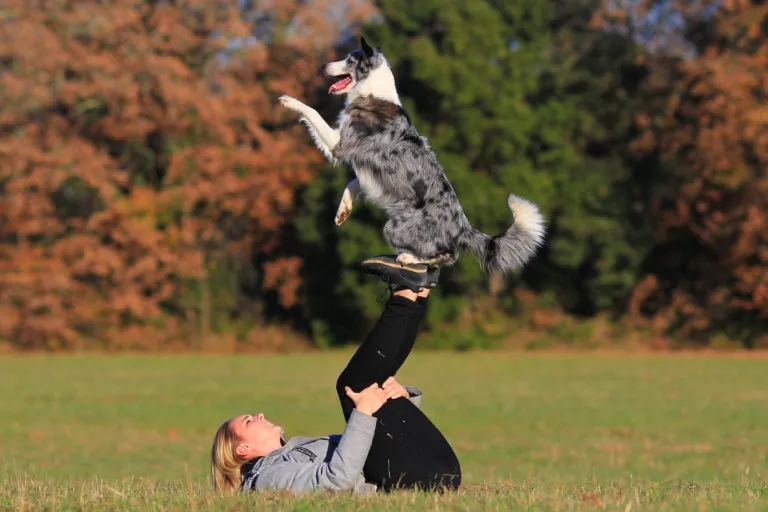Sit, stay and paw – most dogs can master these commands with minimal problems! But dancing?! Alongside agility and obedience, dog dancing is another popular pastime in the canine community.
But what actually is “dog dancing”?
Dog dancing originated in the USA, although international tournaments now take place around the world. The idea behind it is to rehearse choreography with your four-legged friend, based on the most perfect and intricate footwork possible. Impressive tricks and suitable music also accompany a dog dancing performance, calling on all of your imagination and creativity!
This activity is a useful way to keep your dog busy, as well as promoting its intelligence. The joint training can also strengthen the relationship between you and your dog.
A big advantage of this team sport is that you need no specialist equipment and can train almost anywhere. The living room makes a great place to start your training, progressing to the park or garden when the weather is nice and you need a bit more space!
Which dogs are suited to dog dancing?
The main skills your dog needs for this are motivation and the ability to concentrate! It places high demands on dog and owner, but does not require your dog to be a specific age, temperament or breed. Even dogs with joint problems can enjoy some dog dancing, although you should be careful to avoid jumps with these dogs.
Dog dancing: the first steps…
First of all, you need to train your dog to perform a repertoire of basic tricks, then your creativity need know no bounds! Standard tricks include:
- Footwork: moving forwards, backwards and sideways
- Jumps: over an outstretched leg or arm
- Twists: around its own axis or around your leg
- Sitting up and begging
- Rolling
- Crawling
- Leg slaloms: forwards and backwards
Putting together a routine
Once your dog has mastered a few tricks on command, you can begin to build these individual elements up into a routine. Look for a suitable song and pay attention to the pace, taking care to match your movements to the music.
Here are some tips to make it easier for you and your dog to achieve success as swiftly as possible:
- Look out for any movements your dog comes up with by itself, and encourage these actions. Be sure to work with lots of rewards and unique commands!
- Repeat little tricks throughout each session, to help consolidate commands and movements
- Carry out all-round training from the beginning, rather than only focusing on your dog’s best moves!
- Reward your dog with delicious treats for every little success, as this will increase motivation to learn new things
- A training session should last no longer than 20 minutes, as after this point your dog’s concentration will begin to waver and small mistakes can begin to creep in
- Remember, at the heart of dog dancing, you and your pet should always be having fun!
